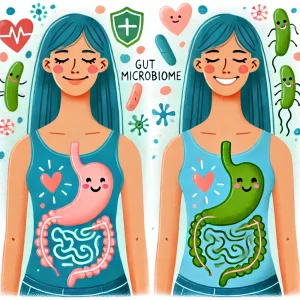Have you ever been researching a discussion topic and found that first article that is so interesting that you know you will use it but find a second article that is equally interesting but not related? Today’s challenge is to take two such articles and share both in a way that actually builds a bridge between them.
But first, a word… apoptosis. Other than being a nifty word that is an attention-getter at dinner parties (especially if you emphasize the “pop”) it is a counterintuitive concept… programmed cell death which is incongruent with cells that focus on staying alive since mitosis. We will come back to this.
In the realm of the immune system, there are two generally accepted forms: innate and adaptive. Innate immunity is something that almost all animals have at birth and relies on macrophage-like cells as a primary defense (Mills et al., 2015). The adaptive immune system relies on T or B cells, found in less than five percent of the animal kingdom, and reacts more slowly to invading microbes than the macrophage-like innate defenses (Mills et al., 2015).
Mills et al. (2015) continued to explore not just the innate-adaptive categories of immune systems but offered an explanation beyond the initiation of the immune system and existing models (e.g., Self/Nonself) response to include the “sequential immune response” (SIR) that they categorized as:
- SIR1 is present in all animal cells and uses rapidly activated enzymes.
- SIR2 relies on macrophage-like cells for defense.
- SIR3 is found in more evolved animals (e.g., invertebrates) and offers greater protection/control through more advanced macrophage recognition of pathogens as well as other innate immune cells (e.g., neutrophils).
- SIR4 is found in vertebrates where macrophages (or dendritic cells) present antigens to T cells.
While Mills et al. (2015) pointed out that animal evolution brought about more advanced stages of SIR, Quiros-Roldan et al. (2024) reminded us that the human immune system degrades as we age through a number of different mechanisms such as decreased production of B cells in the bone marrow and less-effective macrophages (i.e., compromised phagocytosis and changed response to lipopolysaccharide). The greater immunity offered through evolution (e.g., SIR1-4) gradually turns itself off, not because of some external factor but in line with aging.
Now, remember “apoptosis”? Is what occurs naturally (and properly) at the cellular level also something that occurs naturally (and properly) at the being level? Has humankind arrived at a point where we should move our focus in healthcare from the pathogenesis overall and especially of age-related disease to salutogenesis where we focus on developing and maintaining health throughout life (Bhattacharya et al., 2020)?
References
Bhattacharya, S., Pradhan, K. B., Bashar, M. A., Tripathi, S., Thiyagarajan, A., Srivastava, A., & Singh, A. (2020). Salutogenesis: A bona fide guide towards health preservation. Journal of Family Medicine and Primary Care, 9(1), 16–19. https://doi.org/10.4103/jfmpc.jfmpc_260_19Links to an external site.
Mills, C. D., Ley, K., Buchmann, K., & Canton, J. (2015). Sequential Immune Responses: The Weapons of Immunity. Journal of Innate Immunity, 7(5), 443–449. https://doi.org/10.1159/000380910Links to an external site.
Quiros-Roldan, E., Sottini, A., Natali, P. G., & Imberti, L. (2024). The Impact of Immune System Aging on Infectious Diseases. Microorganisms, 12(4), 775. https://doi.org/10.3390/microorganisms12040775Links to an external site.



